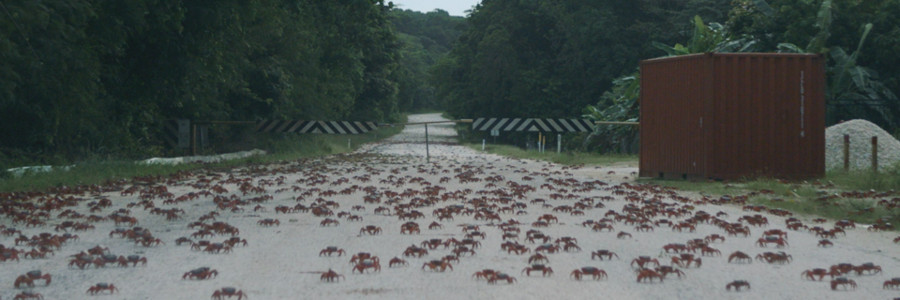Once again, torture and trauma counsellor Poh Lin Lee is on the phone. Once again, none of her patients have arrived for their scheduled meetings, and she’s trying to figure out why. Once again, she’s getting no answers.
A frown splashes across her brow. It’s small, quick, almost imperceptible, but it speaks to a growing frustration and sense of hopelessness. Lee took the job counselling asylum seekers detained on their way to Australia knowing there would be some challenges, but she never expected the biggest would be the system she had been hired to serve.
This is life on Christmas Island, or as Gabrielle Brady’s astounding hybrid documentary calls it, Island of the Hungry Ghosts. The name comes from the dispossessed spirits of indentured Chinese laborers whose deaths were not marked with the appropriate rites that would have allowed them to move on from the troubled lands on which they’d fallen.
The laborers – and the laws that bound them to Britain – no longer remain on the island. They have been replaced by asylum seekers, harrowed souls who wait indefinitely in gated compounds, hoping to one day be freed to live peaceful lives in Australia.
Brady’s hybrid style allows the audience to experience life on the island as if, almost, from a perspective of one of the titular ghosts. In doing so, she has created one of the most powerful Australian documentaries in recent memory.

To hear the tragic stories of Lee’s patients is to experience the frustration she feels in her desperate attempt to support them. One man tells of the pain of not being able to care for his injured mother, as she’s in a separate compound. A woman recreates her experience using a sandbox and some toys. The figure of a baby lies face down in a section she’s marked as water.
The more effort Lee puts in, the worse the situation seems to get. One of her colleagues remarks that the amount of information they’re being provided on their subjects is steadily getting smaller. Are the counsellors really expected to help, or do they exist simply to tick a box?
These scenes are contrasted with haunting segments highlighting the natural beauty of the island, captured in gorgeous detail by cinematographer Michael Lantham. Particular focus is put on the migration of 40 million red crabs slowly scuttling their way across the island. Dedicated workers gently push them off the road, or build makeshift bridges to make the crabs’ journey as smooth as possible. That this is happening on the same island where people are corralled like livestock and stripped of human rights is almost impossible to believe. Presented as parody, it would seem extreme. Such paradoxes can only exist in reality.
“What offering will it take to free those spirits from uncertainty?” asks Lee, as her family send a Chinese lantern floating into the air. It’s a poetic question, but in a documentary that never dares to suggest the spectres of Christmas Island can hope for a happy future, it’s also a desperate one.
What will it take? A documentary like Island of the Hungry Ghosts, as powerful as it is, can only raise the question. Ultimately, it is up to the audience to define the answer.
—
Island of the Hungry Ghosts screens March 3rd as part of ACMI’s Documentary Showcase. The screening will be followed by a Q&A with Director Gabrielle Brady.
